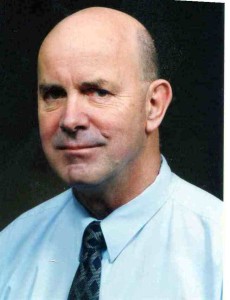Editorial June 2010
News services recently have indicated that the American state of Californian may be on the verge of legalising marijuana in in order to improve its bankrupt budget bottom line with another avenue of taxation.. If this occurs, the single, pressing motivation will be the anxiety of legislators to add billions to the indebted bottom line of the Californian budget. This recognises marijuana is a major cash crop in many Western countries.
Science and Practice Connections
With a few notable exceptions, the impact of science on day to day, solve everyday life is not spectacular. Science has a slow, cumulative effect with facts supporting a process of gradual persuasion which eventually influences practice. In our community it took something like two generations for seatbelts in motor cars to be habitually acceptable despite the proven benefits. Such innovations, highly relevant to the health of the community are only slowly taken up and are often challenged.
Presently community memory has forgotten something of the benefits of childhood immunisation which is now once again under challenge. Any change for individuals and our communities can be uncomfortable and this elicits resistance.
Doll and Hill, publishing in the British Medical Journal of September 1950, proved the clear association between the tobacco cigarette smoking habit and lung carcinoma. Their work was never compromised by other researchers checking their results. However competing stakeholder community influences were so vigourous that it was seven years before the Health Minister of the United Kingdom was able to admit publicly the proof by Doll and Hill so admitting the facts to general public debate and linking science, policy and potential practice.
The example of tobacco nicely illustrates the resistance and delay greeting health imperatives resulting from scientific information. Fifty years after the British Medical Journal article the tobacco companies were still fighting a rearguard action arguing against issues such as nicotine as a drug of dependence, tar levels as carcinogens advertising and related consumption levels of tobacco and the ethics and detrimental effects of passive smoking affecting the “innocent bystander.”
Tobacco, alcohol and other drugs challenge community decision-making and our values at fundamental levels. Even today, our politicians are insufficiently educated to devote sufficient community resources to treatment services for substance problems to address adequately priorities and distributive justice. There is a lack of clear voices addressing the natural human ambivalence about psychoactive drugs. Anyone honestly would admit to some leaning towards “the drug” which would guarantee human happiness without any downsides.
On television recently, a young scientist was casually saying that if there were a microchip available to improve the functioning of his brain, he would gladly undergo neurosurgery for the implant. This reminds me of the neurosurgeons in the 1970s who were doing many prefrontal lobotomies on anxious patients, cutting fibre tracts in the frontal lobes of the brain to make people more happy. It made these people generally so unconcerned that they became moribund or inactive generally. It surely did not look like happiness to me.
Science advances human knowledge. But science requires such special conditions and controls for its operations that it becomes a clumsy paradigm for health priorities and lifestyle issues.
We still debate what “social drinking” really is. Science is equivocal regarding the ethical basis for special product industries such as alcoholic beverages. National, geographic and historical variances add to the confusion. Invalid community stereotypes regarding the typical alcoholic person contribute to the community misdirecting of both science and practice.
Human nature is such that, at the end of the 18th century in Britain, there was a £50 sterling prize for enhanced opium poppy growing!
Two centuries ago, the United States of America subsidised its economy significantly through the export of tobacco products to the United Kingdom. Today, underdeveloped countries augment economic growth by links to the international drug trade. For example, the export of cocaine and other drugs from South America to the United States is a well-known problem.
Emerging East Central Europe is a place of rapid social change. Communities there are attempting to cope with quite destructive alcohol and other drug problems. This is aggravated by increased population mobility, relaxed border crossing disciplines and, often, collapsed social controls.
For our young people, science lags far behind in developing a community voice to counter the belief that intra-psychic pain and the miseries of adolescence and young adulthood are “soluble” in alcohol and psychoactive escapism.
The opening of borders, the spreading of the backpacker culture across the world and the strength of youth counterculture is reinforced by film and television idealised imagery. All of this has led to the merging of home-grown and international illicit drug markets as young people experiment with chemical solutions to life unimpressed by science or adult urgings regarding caution.
Harm minimisation efforts in Australia, the United Kingdom and United States of America suffer because of the historical artificial distinction separating alcohol, tobacco and other drugs and psychiatry for that matter. For ultimately, the casualties of substance-abuse end up within psychiatric medicine. Substance problems and psychiatry are more often than not artificially separated.
The casualties of all psychoactive substances run through a sequence of tobacco alcohol and other drugs. Yet, we continue to argue about this established fact.
Some European countries have attempted to seek a balance with various forms of attempted controlled use of marijuana. Australia with typical timidity has experimented in a few States and created great confusion, cross-border trade in illicit cannabis and, to my mind, judicial confusion in the courts.
Social processes for legitimising some substances and criminalising others demonstrate our community ambivalence and impotence. The young are quite right to point out that alcohol is more deadly than cannabis. However they cannot understand apparently how dangerous cannabis is for the young developing mind.
Meanwhile, the scientist stands aside and functions by way of timely persistence and informing influence whilst striving to be part of the debate rather than part of the decisions. This admirable purity is obscured by multiple stakeholder voices including ignorant legislators, police services with an eye on arrest rates and the industries governing legitimised drugs with an eye on balance sheets and profits. Perhaps only the mass media attempt to broker a balance bars in this are hampered by fads, fashions and misinformation. Scientific input is unfashionable and unpopular.
Applied science is too expensive when politicians in Australia, worried about three-year election cycles, often have to pay millions of dollars to fix up electoral problems in order to address more pressing problems such as their own re-election and self-aggrandising needs..
Science is a passive marketer. It requires voices of support, explanation networking and innovation. Within medicine, in Australia, the Royal Australian College of Physicians appears to be leading the way. The specialty of Psychiatry appears hampered by a lack of leadership and by the artificial division imposed between clinical aspects of psychiatry and substance dependencies. Public psychiatry also lacks be intermediate length of stay beds necessary for their handling of people disturbed by drug addictions.
In the final analysis, the pressure on the legislators and on the psychiatrists must come from the general public.
Deinstitutionalisation in Australia reduced the number of public and private psychiatric hospital beds from 30,000 in the early 1960s to 8000 today in a timeframe when the population of Australia doubled. Many people with serious mental illnesses including drug addictions are not being managed well.
Some mental health scientists as well as some media commentators argue that we have simply transferred psychiatric patients to prison remand centres and prisons. Australian remand centres often contain more seriously mentally ill people then do general hospital mental health inpatient units.
Prisoners, according to the Medical Journal of Australia, have a highly increased relative risk of mortality (17 times higher than in the general population in the two weeks following release from prison).
The main causes of excess deaths are associated with drug and alcohol misuse. Despite these figures, treatment services for prisoners and ex-prisoners are limited and often ineffectual.
Ian Curtis





 Dr Ian Curtis is a senior psychiatrist in full-time practice in Brisbane. Dr Ian Curtis is also a public speaker with over 30 years experience. Dr Ian Curtis as been involved in preparing and presenting workshops and lectures for Queensland Health, the Queensland Police Service, the University of Queensland Medical School, and Brisbane Churches. He has also lectured at international venues in China, India, and the USA.
Dr Ian Curtis is a senior psychiatrist in full-time practice in Brisbane. Dr Ian Curtis is also a public speaker with over 30 years experience. Dr Ian Curtis as been involved in preparing and presenting workshops and lectures for Queensland Health, the Queensland Police Service, the University of Queensland Medical School, and Brisbane Churches. He has also lectured at international venues in China, India, and the USA.